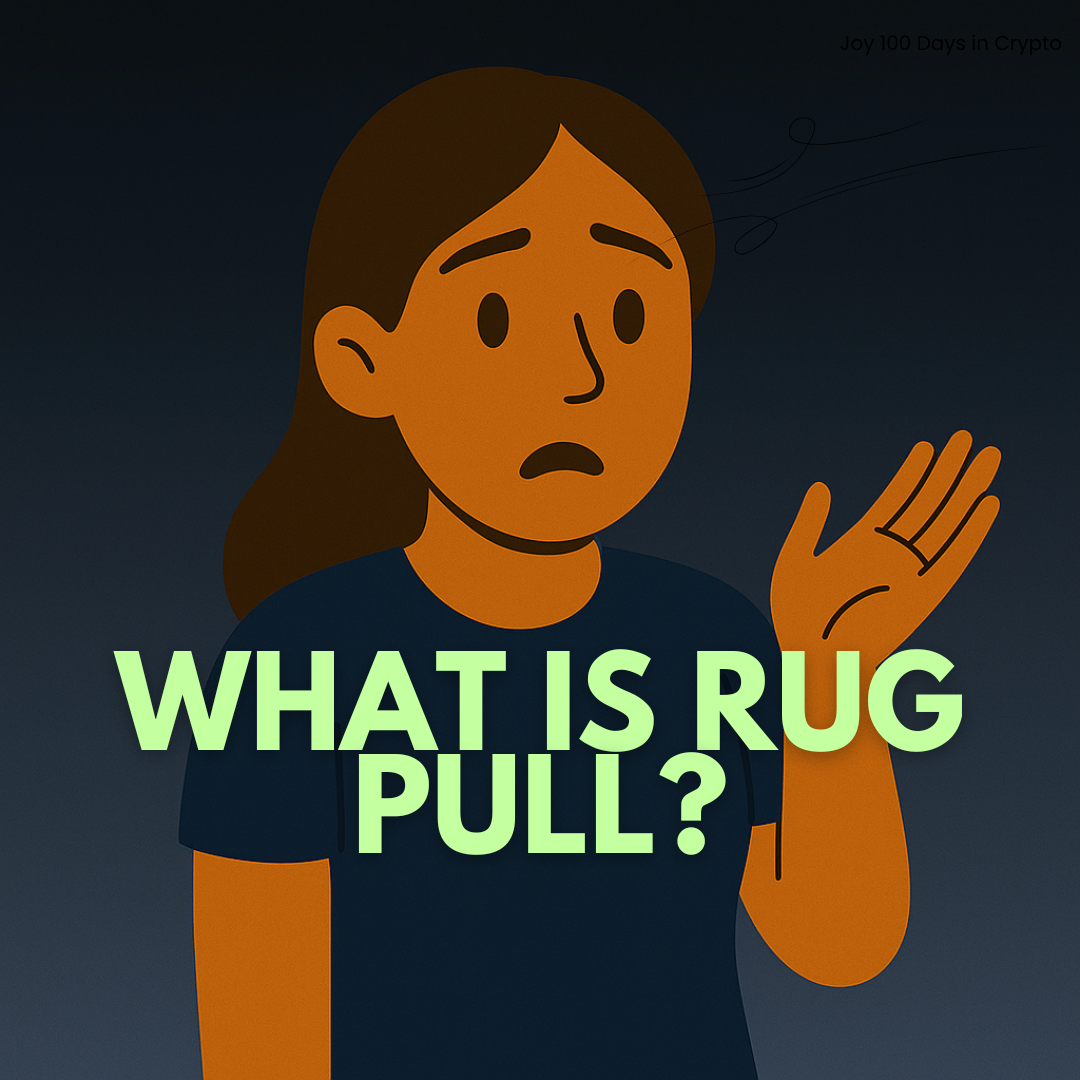One of the scariest parts of crypto is this: you can be excited about a project one night, and by morning, it’s gone.
Your money?
Wala na.
This kind of thing happens more often than we’d like to admit, and it has a name, rug pull.

I remember the first time I saw people talking about a rug pull on Twitter back in 2021. A token had been hyped like crazy, influencers, YouTubers, and Telegram groups were all buzzing. People were putting in their savings, some even borrowing just to join. Then, out of nowhere, the project disappeared. The devs pulled out the funds, the price crashed to zero, and thousands of investors were left with nothing. That’s when I realised: as exciting as crypto can be, it’s also full of risks. If we’re not careful, scams can eat us alive. But here’s the good news: scams leave clues. And if you know what to look for, you can protect yourself.
What Exactly Is a Rug Pull?
The term “rug pull” comes from the image of someone yanking a rug out from under you, making you fall flat on your face. In crypto, it happens when developers abandon a project and run away with investors’ funds.
Here are the most common ways rug pulls happen:
- Liquidity Drains – Developers create a token, hype it up, and add it to a decentralized exchange (like Uniswap or PancakeSwap). Investors buy in, but then the developers suddenly pull out all the liquidity (the money that makes trading possible). The token’s value crashes instantly.
- Project Abandonment – A flashy roadmap, exciting whitepaper, and big promises lure investors. But after raising enough money, the devs stop updating, stop building, and disappear. The community is left holding worthless tokens.
- Pump-and-Dump Schemes – Influencers or insiders push a token’s price up (pump), then sell all their holdings at the peak. When they dump, regular investors are left holding the bag.
And it’s not just small projects. Even “big” names have pulled rugs or been caught in scams. That’s why being careful is non-negotiable.
Other Common Crypto Scams
Rug pulls aren’t the only danger. Over the years, I’ve seen different scams targeting both newbies and even experienced traders:
- Phishing Links – Fake websites or emails that trick you into entering your wallet seed phrase. Once you type it in, goodbye funds.
- Fake Airdrops – Promises of free tokens, but you have to “connect your wallet.” The moment you do, your assets get drained.
- Ponzi Schemes – Projects that promise crazy returns (like 10% daily). They pay early investors using money from new ones, until the system collapses.
It’s the same old scam tactics, just wearing a new crypto mask.
How Not to Be a Victim
So how do we avoid falling into these traps? Here are lessons I’ve learned (sometimes the hard way):
- Do Your Own Research (DYOR)
Don’t just invest because your friend said so or because it’s trending on TikTok. Read the project whitepaper. Check their website. Look for their team’s credibility. - Check Liquidity and Audits
Is the token’s liquidity locked? If not, the devs could pull it anytime. Was the smart contract audited by a reputable firm? No audit = red flag. - Be Wary of Anonymous Teams
Yes, some legit projects started with anonymous founders (like Bitcoin). But in today’s crowded market, most scams hide behind anonymity. - Avoid Unrealistic Promises
If a project is promising 100x overnight, run. Crypto has opportunities, but nothing is guaranteed, and nothing is instant. - Secure Your Wallet
Never, ever share your seed phrase. If a site or “support team” asks for it, it’s a scam.
My Analogy: Crypto as Online Shopping
Let’s make it simple. Think of investing in crypto like buying online.
- A legit seller has reviews, a track record, and delivers the product you ordered.
- A scam seller posts nice pictures, makes big promises, but disappears once you’ve paid.
Crypto projects are the same. Some are real, building value for the long term. Others are just nice packaging designed to steal your money. If you wouldn’t send money to a sketchy Facebook seller, why would you send your hard-earned cash to a project you haven’t researched?
Why This Matters for Us Moms
As moms, we’re often careful with money. We budget for groceries, school fees, and emergencies. We don’t throw money away on things that feel “too good to be true.” The same wisdom applies to crypto.
I’ve met moms who got burned by rug pulls. Some lost ₱5,000, others ₱50,000. The common thread? They trusted hype without checking. On the other hand, I’ve also met moms who took the time to research, joined communities, asked questions and they’re still here, growing their investments carefully.
Crypto can open doors, but only if we protect ourselves.
Takeaway
Rug pulls and scams are real. They’re the dark side of crypto. But with awareness, research, and caution, we can avoid being victims.
Think of it this way: you wouldn’t let your child talk to strangers online without teaching them safety rules, right? In the same way, you shouldn’t jump into crypto without learning how to protect yourself.
The golden rule? Kung duda ka, wag muna. If you’re unsure, take a step back. There will always be another opportunity, but once money is lost to a scam, it’s almost impossible to get back.

Leave a Reply